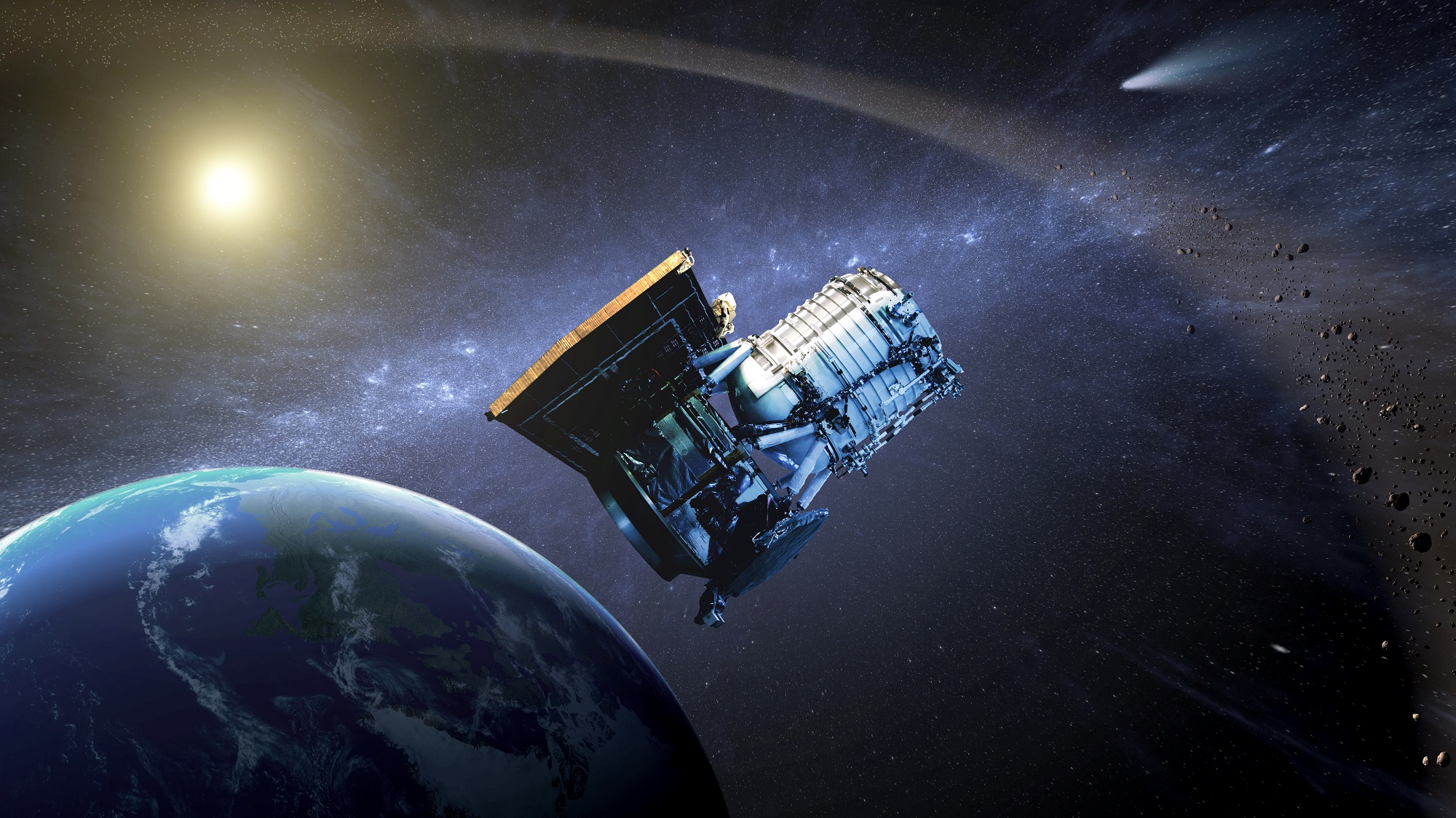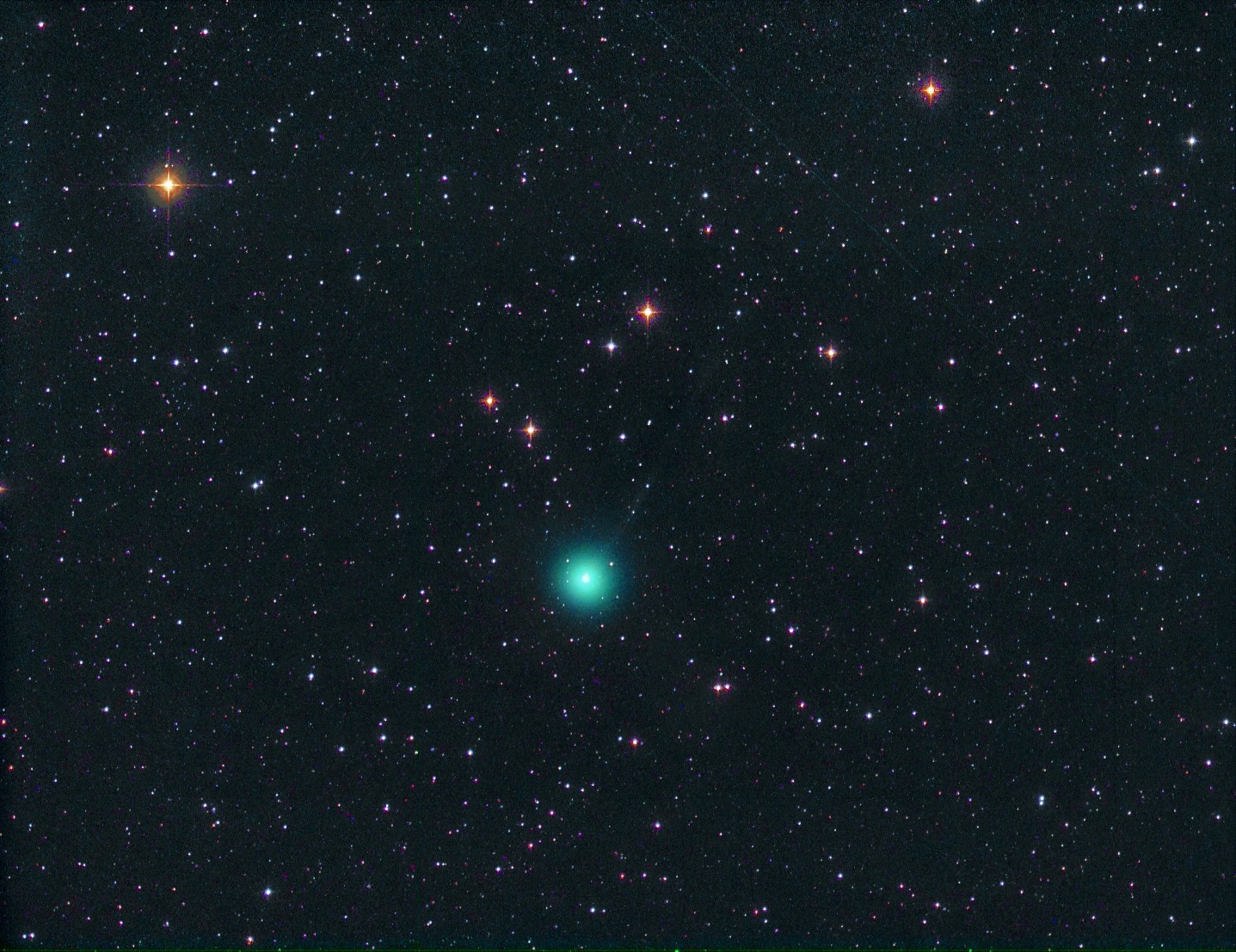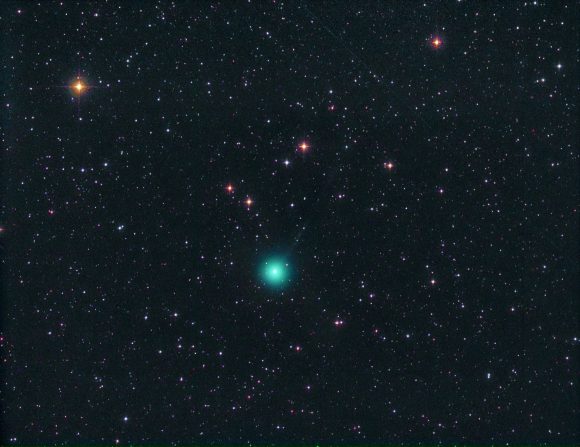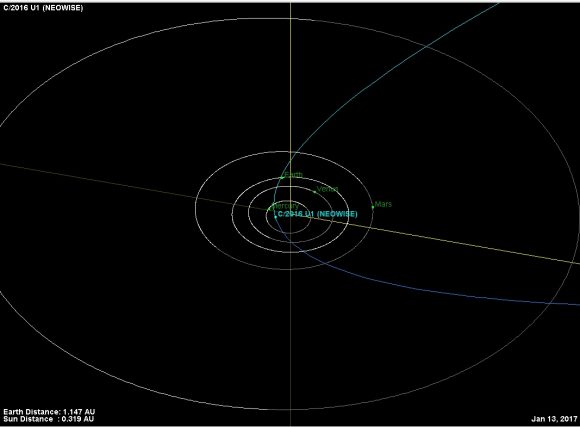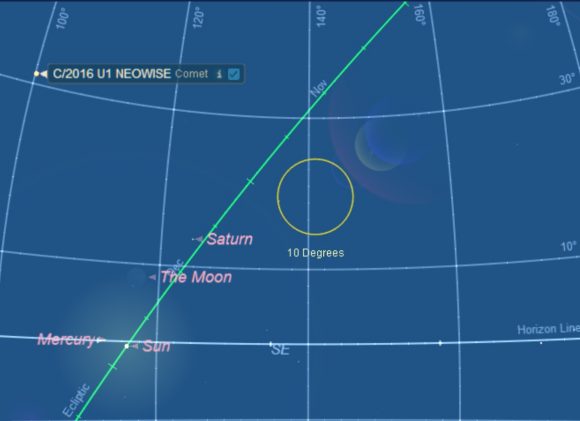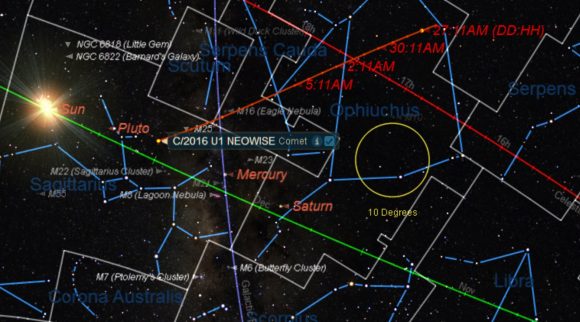NASA’s Wide-field Infrared Survey Explorer (WISE) accomplished much during its first mission, which ran from December of 2009 to September of 2010. During the many months that it was active, the orbital telescope conducted an all-sky astronomical survey in the infrared band and discovered thousands of minor planets and numerous star clusters.
The extension of its mission, NEOWISE, has brought new life to the telescope as a comet and asteroid hunter. And since its re-activation in December of 2013, the orbiting telescope has spotted hundreds of Near Earth Objects (NEOs) and thousands of Main Belt asteroids. Most recently, it has detected two new objects (both possibly comets) which could be observable from Earth very soon.
The most recent object to be detected – 2016 WF9 – was first observed by NEOWISE on November 27th, 2016. This comet’s path through the Solar System takes it on a circuitous route, taking it from Jupiter to just inside the orbit of Earth over the course of 4.9 years. Much like other objects of its kind, 2016 WF9 may have once been a comet, or part of a population of dark objects in the Main Asteroid Belt.
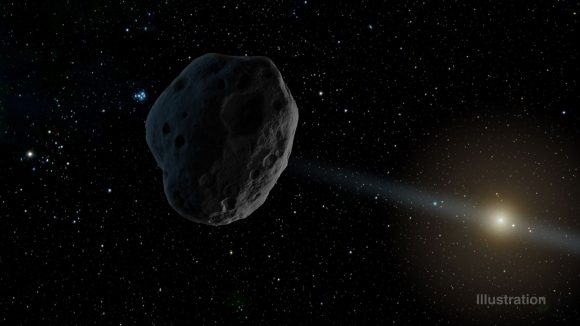
In any case, 2016 WF9 will approach Earth’s orbit on February 25th, 2017, passing Earth at a minimum distance of almost 51 million km (32 million mi). This will place it well outside the orbit of the Moon, so the odds of it threatening Earth are negligible. But for those keen observers hoping to catch sight of the object, it will be close enough that it might be visible with just a pair of binoculars.
Since its discovery, 2016 WF9 has been of interest to astronomers, mainly because it straddles the already blurry line between asteroids and comets. While its proportions are known – roughly 0.5 to 1 kilometer in diameter (0.3 to 0.6 miles) – its other characteristics have led to some confusion as to where it came from. For one, its appearance (which is quite dark) and its orbit are consistent with what one expects from a comet.
But on the other hand, it lacks the characteristic cloud of dust and gas that comets are known for. As James Bauer, NEOWISE’s Deputy Principal Investigator at JPL, said in a NASA press release:
“2016 WF9 could have cometary origins. This object illustrates that the boundary between asteroids and comets is a blurry one; perhaps over time this object has lost the majority of the volatiles that linger on or just under its surface.”
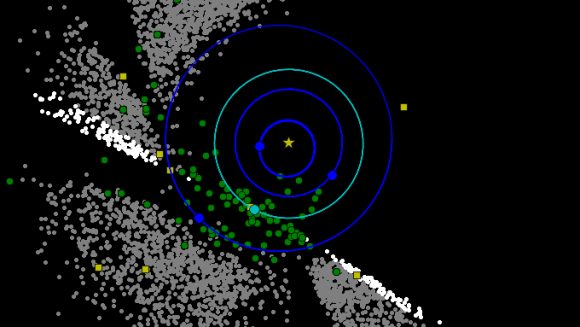
The other object, C/2016 U1 NEOWISE, was discovered about a month prior to 2016 WF9. Its orbit, which can you see by checking out the 3D Solar System Simulator, takes it from the outer Solar System to within Mercury’s orbit over the course of thousands of years. According to NASA scientists, this object is very clearly a comet, as evidenced by the dust it has been releasing as it gets closer to our Sun.
During the first week of 2017, comet C/2016 U1 NEOWISE is also likely to be visible in the night sky – in this case, in the southeastern sky shortly before dawn (for those looking from the northern hemisphere). It will reach its closest point to the Sun on January 14th (where it will be passing within Mercury’s orbit) before heading back out towards the outer Solar System.
Once again, it is believed that comet-hunters should be able to see it, though that is open to question. Paul Chodas, the manager of NASA’s Center for Near-Earth Object (NEO) Studies at the Jet Propulsion Laboratory, thinks that this object “has a good chance of becoming visible through a good pair of binoculars, although we can’t be sure because a comet’s brightness is notoriously unpredictable.”
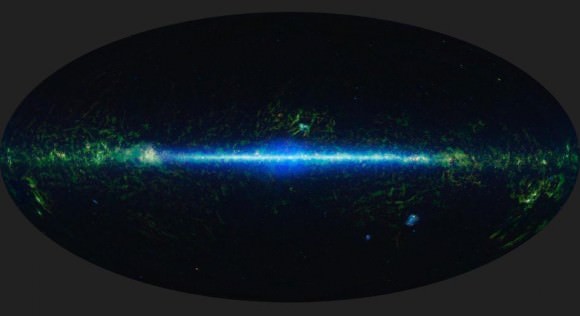
In any case, NASA will be continuing to monitor 2016 WF9 to see if they can’t sort out what it is. Should it prove to be a comet, it would be the tenth discovered by NEOWISE since it was reactivated in December of 2013. If it turns out to be an asteroid, it would be the one-hundredth discovered since its reactivation.
As of November 2016, the orbital telescope has conducted over 562,000 infrared measurements have been made of 24,024 different solar system objects, including 613 NEOs and 110 comets. It has also been responsible for discovering 249 new near-Earth objects and comets, as well as more than 34,000 asteroids during its original mission.
At present, NEOWISE’s science team is currently reprocessing all its primary mission data to extend the search for asteroids and comets. It is hoped that by taking advantage of the latest in photometric and astrometric calibrations, they will be able to push the limits of what the telescope can detect, thereby adding many more minor planets and objects to its suite of discoveries.
And be sure to enjoy this video, detailing the first two years of asteroid data collected by the NEOWISE mission:
Further Reading: NASA

